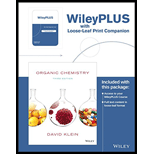
Concept explainers
(a)
Interpretation:
All staggered conformations of structure (1) has to be drawn.
Concept Introduction:
Conformations: Rotation about C-C single bonds allows a compound to adopt a variety of possible three-dimensional shapes.
Newman projections: The new conformations of compounds can be drawn and analyzed by Newman projections. A Newman projection visualizes different conformations of Carbon-carbon
The angle between two hydrogens of a Newman projection is called as dihedral angle or torsional angle. This dihedral angle changes as the C-C bond rotates. Two conformations with special attentions are staggered and eclipsed conformation. Staggered conformation is the lowest in energy and the eclipsed conformation is the highest in energy.
For example,
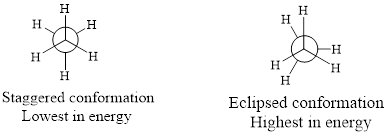
Anti-conformation: The conformation with a dihedral angle of

The two methyl groups achieve maximum separation from each other. In other, methyl groups are closer to each other; their electron clouds are repelling each other, causing an increase in energy. This unfavorable interaction is called gauche interaction.
(b)
Interpretation:
The least stable staggered conformations of structure (1) has to be identified.
Concept Introduction:
Conformations: Rotation about C-C single bonds allows a compound to adopt a variety of possible three-dimensional shapes.
Newman projections: The new conformations of compounds can be drawn and analyzed by Newman projections. A Newman projection visualizes different conformations of Carbon-carbon chemical bond from front to back with the front carbon represented as a black dot and the back represented as a circle
The angle between two hydrogens of a Newman projection is called as dihedral angle or torsional angle. This dihedral angle changes as the C-C bond rotates. Two conformations with special attentions are staggered and eclipsed conformation. Staggered conformation is the lowest in energy and the eclipsed conformation is the highest in energy.
For example,

Anti-conformation: The conformation with a dihedral angle of

The two methyl groups achieve maximum separation from each other. In other, methyl groups are closer to each other; their electron clouds are repelling each other, causing an increase in energy. This unfavorable interaction is called gauche interaction.
Want to see the full answer?
Check out a sample textbook solution
Chapter 4 Solutions
Organic Chemistry, Third Edition Binder Ready Version
- 3-Methylaniline with NaNO2 in HCl at 0°C and subsequent reaction with water in an acidic medium.arrow_forwardThe reaction of cyclohexanone with diethylamine.arrow_forwardYou're preparing the 2-1 parenteral nutrition that uses potassium phosphate vials (3 mmol of phosphate and 4.4 meq of potassium per mL) to add the phosphate to the parenteral nutrtion. How many meq of potassium are added to the parenteral nutrition when the phosphate is added? Potassium 65 meq Phosphate 24 mmol Sterile water qs ad 2000mlarrow_forward
- The combined calcium and phosphorus in a parenteeral nutrition should not exceed 45 mEq/L. if the parenteral nutrition order shown containes 2mEq PO4/mmol, what is the combined calcium and phosphorus (mEq/L) in the parenteral nutrition order? Parenteral nutrition order: Potassium 65 mEq, Phosphate 24 mmol, Calcium 12 mEqarrow_forwardpls help on all asked.arrow_forward29. The following reaction takes place. A2B(s) = 2A (aq) + B(aq) + heat. If 2.50 moles of A2B is added into a 2.00 L container, it is found that 25.0% of the reactant dissociates to reach equilibrium. Find the solubility product constant, Ksp, for this reaction. Note: Your answer must include an ICE table.arrow_forward
 ChemistryChemistryISBN:9781305957404Author:Steven S. Zumdahl, Susan A. Zumdahl, Donald J. DeCostePublisher:Cengage Learning
ChemistryChemistryISBN:9781305957404Author:Steven S. Zumdahl, Susan A. Zumdahl, Donald J. DeCostePublisher:Cengage Learning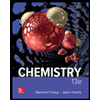 ChemistryChemistryISBN:9781259911156Author:Raymond Chang Dr., Jason Overby ProfessorPublisher:McGraw-Hill Education
ChemistryChemistryISBN:9781259911156Author:Raymond Chang Dr., Jason Overby ProfessorPublisher:McGraw-Hill Education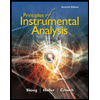 Principles of Instrumental AnalysisChemistryISBN:9781305577213Author:Douglas A. Skoog, F. James Holler, Stanley R. CrouchPublisher:Cengage Learning
Principles of Instrumental AnalysisChemistryISBN:9781305577213Author:Douglas A. Skoog, F. James Holler, Stanley R. CrouchPublisher:Cengage Learning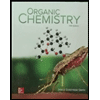 Organic ChemistryChemistryISBN:9780078021558Author:Janice Gorzynski Smith Dr.Publisher:McGraw-Hill Education
Organic ChemistryChemistryISBN:9780078021558Author:Janice Gorzynski Smith Dr.Publisher:McGraw-Hill Education Chemistry: Principles and ReactionsChemistryISBN:9781305079373Author:William L. Masterton, Cecile N. HurleyPublisher:Cengage Learning
Chemistry: Principles and ReactionsChemistryISBN:9781305079373Author:William L. Masterton, Cecile N. HurleyPublisher:Cengage Learning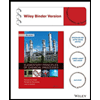 Elementary Principles of Chemical Processes, Bind...ChemistryISBN:9781118431221Author:Richard M. Felder, Ronald W. Rousseau, Lisa G. BullardPublisher:WILEY
Elementary Principles of Chemical Processes, Bind...ChemistryISBN:9781118431221Author:Richard M. Felder, Ronald W. Rousseau, Lisa G. BullardPublisher:WILEY





